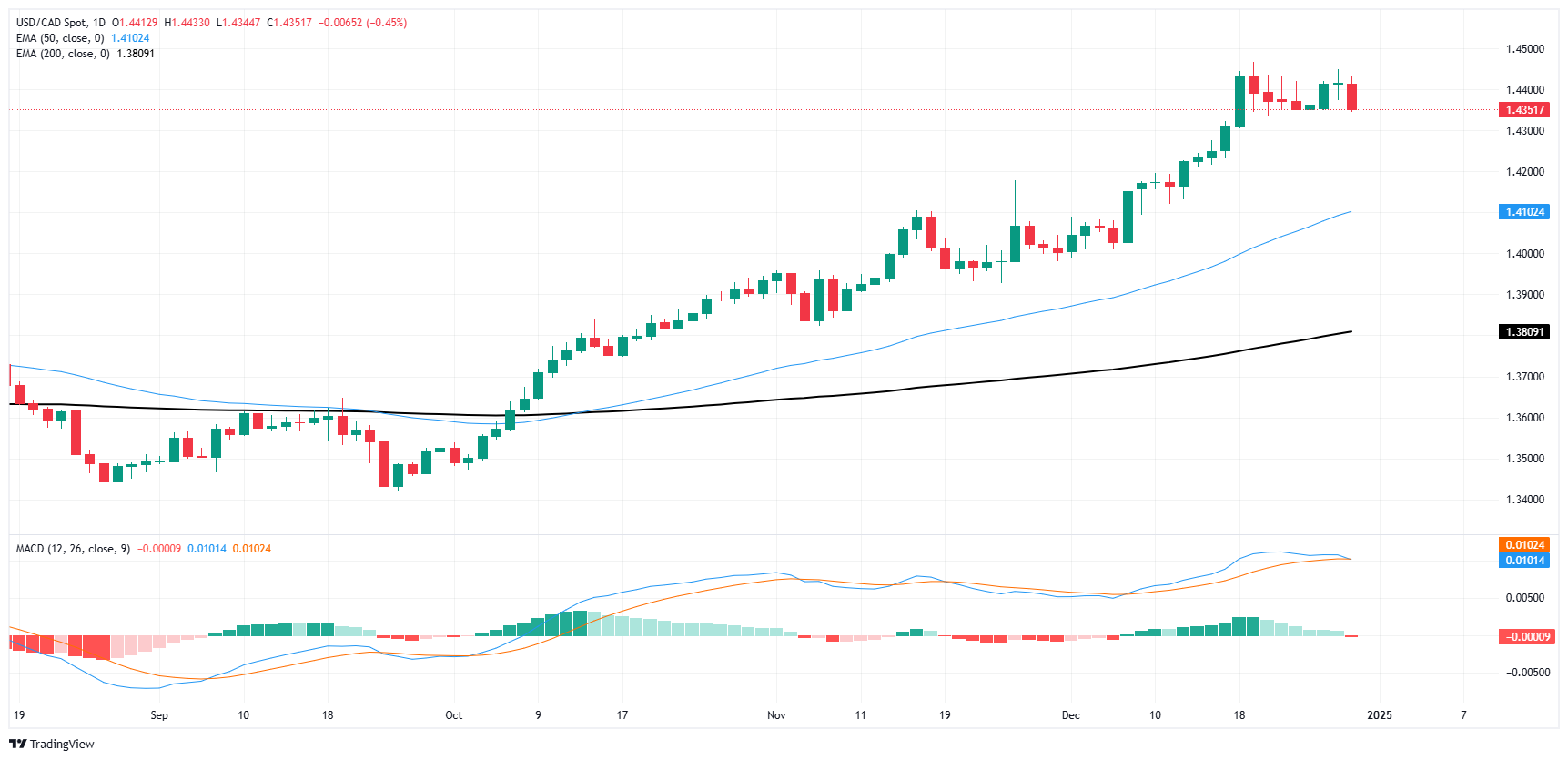Canadian Dollar catches thin bid on holiday-constrained market flows
- The Canadian Dollar rose nearly half of a percent against the Greenback.
- Canada is almost entirely absent from the economic calendar this week.
- Thin data and low holiday volumes bode poorly overall for CAD bulls.
The Canadian Dollar (CAD) caught a thin bid on Monday, rising a little over four-tenths of one percent against the Greenback as tepid markets round out the 2024 trading season. Investors are caught in a volatility trap ahead of the midweek market closure, with most of the global market space remaining off for the week.
Canadian economic data remains limited this week, and Loonie markets will be kicking off 2025 with a whimper with the only datapoint of note being Thursday’s Canadian Manufacturing Purchasing Managers Index (PMI) figures. US markets will follow up with ISM Manufacturing PMI numbers on Friday.
Daily digest market movers: Markets hunker down amid holiday trading doldrums
- The CAD rebounded 0.4% against the USD to start the new trading week, but meaningful momentum remains limited.
- The Loonie is still trading close to multi-year lows against the Greenback.
- Canadian and US markets will be shuttered for New Year’s Day on Wednesday.
- Canadian and US PMI figures are due after the midweek shutdown.
- Both survey result indexes are expected to tick lower as business expectations cool heading into the post-holiday slowdown.
Canadian Dollar price forecast
The Canadian Dollar is adrift near multi-year lows against the US Dollar, bolstering the USD/CAD pair into the 1.4400 chart region. Despite this, the key technical level appears to be holding, but a clear lack of bullish momentum underpinning the Loonie is keeping the pair well-bid.
A medium-term bull run in the US Dollar saw USD/CAD close higher for all but two of the last 12 straight trading weeks, lifting the Greenback 7.8% higher against the Loonie bottom-to-top. The immediate target for CAD bidders will be to force the pair back below the 1.4300 handle.
USD/CAD daily chart
Canadian Dollar FAQs
The key factors driving the Canadian Dollar (CAD) are the level of interest rates set by the Bank of Canada (BoC), the price of Oil, Canada’s largest export, the health of its economy, inflation and the Trade Balance, which is the difference between the value of Canada’s exports versus its imports. Other factors include market sentiment – whether investors are taking on more risky assets (risk-on) or seeking safe-havens (risk-off) – with risk-on being CAD-positive. As its largest trading partner, the health of the US economy is also a key factor influencing the Canadian Dollar.
The Bank of Canada (BoC) has a significant influence on the Canadian Dollar by setting the level of interest rates that banks can lend to one another. This influences the level of interest rates for everyone. The main goal of the BoC is to maintain inflation at 1-3% by adjusting interest rates up or down. Relatively higher interest rates tend to be positive for the CAD. The Bank of Canada can also use quantitative easing and tightening to influence credit conditions, with the former CAD-negative and the latter CAD-positive.
The price of Oil is a key factor impacting the value of the Canadian Dollar. Petroleum is Canada’s biggest export, so Oil price tends to have an immediate impact on the CAD value. Generally, if Oil price rises CAD also goes up, as aggregate demand for the currency increases. The opposite is the case if the price of Oil falls. Higher Oil prices also tend to result in a greater likelihood of a positive Trade Balance, which is also supportive of the CAD.
While inflation had always traditionally been thought of as a negative factor for a currency since it lowers the value of money, the opposite has actually been the case in modern times with the relaxation of cross-border capital controls. Higher inflation tends to lead central banks to put up interest rates which attracts more capital inflows from global investors seeking a lucrative place to keep their money. This increases demand for the local currency, which in Canada’s case is the Canadian Dollar.
Macroeconomic data releases gauge the health of the economy and can have an impact on the Canadian Dollar. Indicators such as GDP, Manufacturing and Services PMIs, employment, and consumer sentiment surveys can all influence the direction of the CAD. A strong economy is good for the Canadian Dollar. Not only does it attract more foreign investment but it may encourage the Bank of Canada to put up interest rates, leading to a stronger currency. If economic data is weak, however, the CAD is likely to fall.
